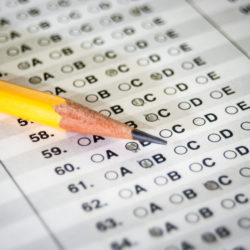The standardized testing landscape has changed dramatically in the past few years with the pandemic-fueled increase in test-optional and even test-blind college admissions. Now the new digital SAT is shaking up the landscape even more, particularly for those students who receive standardized testing accommodations. With many assistive technology options, the new digital SAT will likely benefit many students with learning differences. However, there are a few drawbacks to consider.
Here are some ways the new digital SAT may positively and negatively impact neurodiverse students.
Pros:
- Shorter test will benefit students with attention challenges such as ADHD
- Completing the test on the computer will eliminate the difficulty some students have with tracking and alleviate the difficulties with bubbling in a scantron form for those with fine motor control challenges
- Adaptive questions, which adjust to a student’s ability, may decrease frustration
- More time per question, so a student’s processing speed is less important
- Shorter reading passages benefit those with reading challenges
- Text-to-speech capability, where a student can adjust the speed of delivery vs. relying on a human reader, which can be unpredictable
- Students can alter the font size and type of font, colors, and background for increased readability
- Calculator available on screen to help those with math calculation difficulties
- Math formulas available for students to reference, reducing the need for memorization
- Highlighter tool can help students mark text or answer options
- Students can increase amount of white space between lines of text for easier reading
- No more relying on a live proctor—extra time is much easier to administer because it’s run by the computer, ensuring a consistent, reliable experience
- Students can isolate one line of text at a time to block out distractions
- Students can eliminate answers using “strikethrough” to help them narrow answer options
- Students can zoom in to make text bigger
- Scratch paper will still be available
- Access to a clock on the computer that counts down the time and gives a five-minute warning, helping students to manage their time strategically
Possible Cons:
- The adaptive feature could cause anxiety and distraction for students who try to figure out the level of questions they are being offered
- Students without computers will be using borrowed computers they may not be familiar with; this could disadvantage students without access to computers or who don’t have a comfort level with the computer they will using for the test
The PSAT in October 2022 will be a good trial run to see the ways in which LD/ND students experience and potentially benefit from the new format. IECs need to be aware that the class of 2025 will be a “test” class, because the scoring will be different from the paper SAT and there will be no correlation tables. IECs can help students prepare for the new format by recommending they take a digital practice test (if available) to familiarize themselves with using their accommodations on the new format.
Overall, the new digital SAT has the potential to greatly improve the testing experience for many students with learning differences.
By Elizabeth Cooper, JD, IECA (MA); Julie Richie, MFA, IECA (TX); and Ann Rossbach, MAT, CEP, IECA (NJ)


